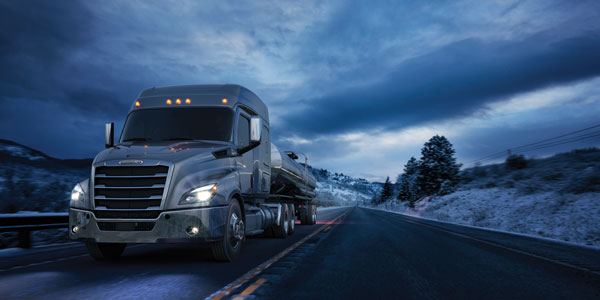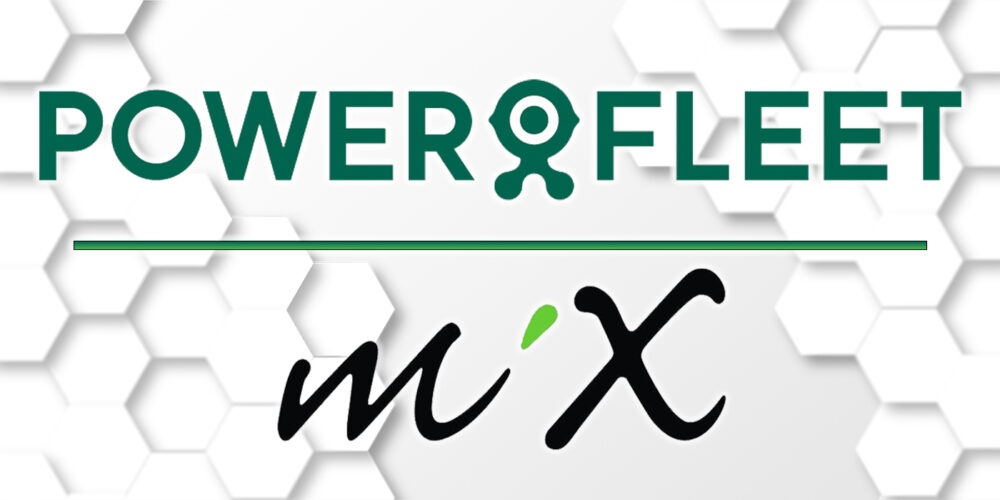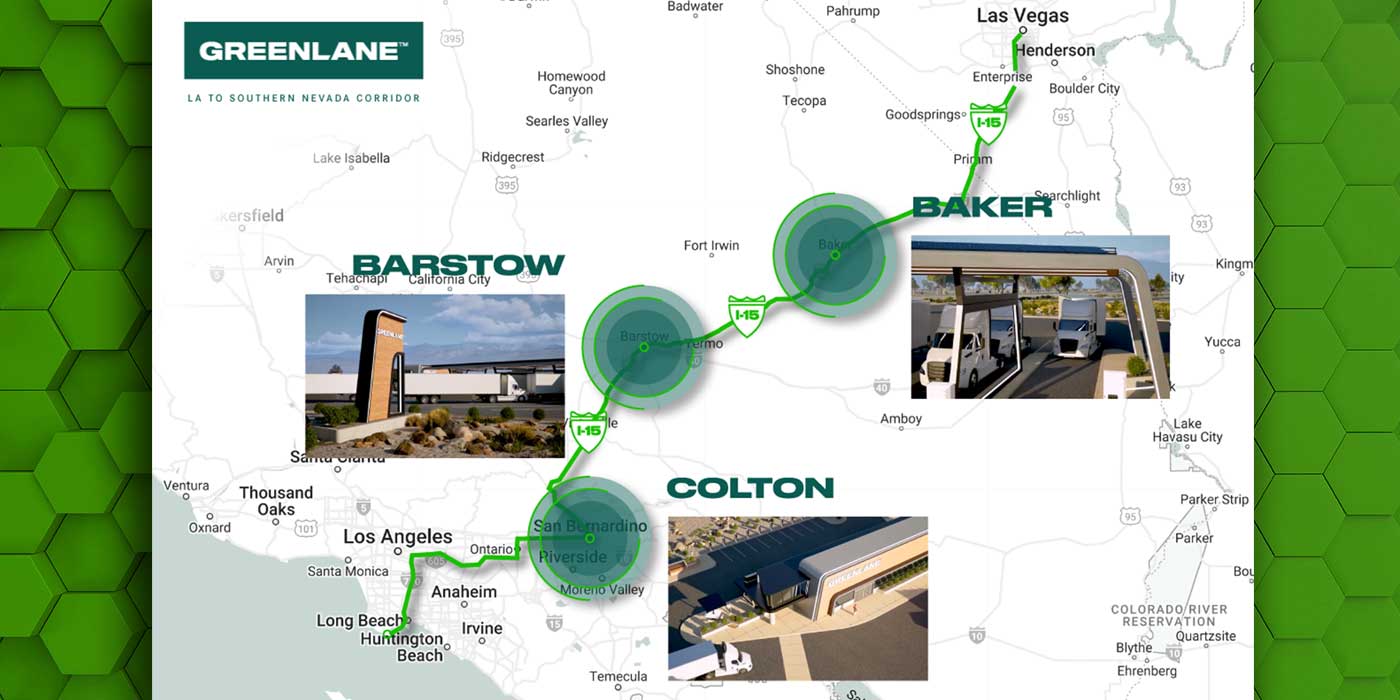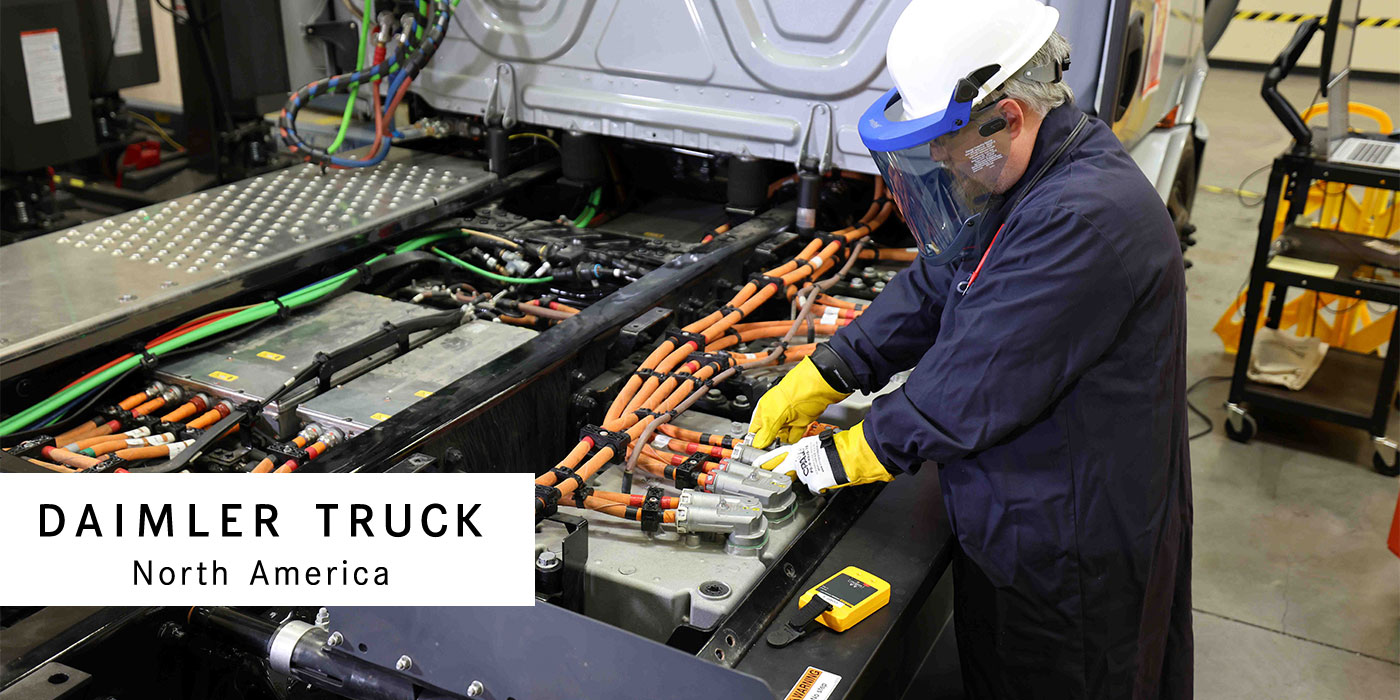Twenty-four hours.
That’s the amount of time that Stefan Kurschner is fixated on as he steps in front of the collected North American trucking business press. Stefan, as Daimler Trucks North America (DTNA) senior vice president for aftermarket, faces a rapidly evolving, customization-demanding environment: truck service.
“This is the last shiny truck you’re going to see,” Stefan says. The presentation screen displays a sparking Freightliner new Cascadia. Martin Daum, the president and chief executive officer of DTNA at the time the picture was taken, now member of the board of management with responsibility for Daimler Trucks and Daimler Buses, stands next to a customer in the picture. Both wear wide smiles. “That’s how the new truck sales people see the customer. So let’s adjust your expectations.”
Click.
The screen shows a truck broken down on the side of the road, hood splayed open, engine smoldering, and an angry driver walking away from it. That’s the moment when Stefan typically has his first interaction with a customer.
“We have a great product,” Stefan says, “but it’s no secret that our products can fail at some point. When you have a hard-working business tool, sometimes, it breaks down. Our customers know that it’s not if it’ll break down—it’s the way you get the truck back on the road that makes the difference.”
He has personally felt the reverberations of a service experience. A customer once told him that a driver will walk away from a fleet if a truck is down for more than 12 hours. With the stage now set, Stefan announces that DTNA is committed to setting a new service standard: A 24-hour turnaround time for truck repairs at its service locations.
“And we will not stop at 24 hours. The goal is 24 hours or less. I could write four hours as the goal,” he says as he points to the service goal displayed on the presentation screen, “and it would be a nice marketing line, but we’re going to hold ourselves accountable to our vision. We think 24 hours is achievable—59% of repairs in our network, today, are completed within 24 hours, and several of our dealerships are currently achieving 24-hour turnaround for more than 80% of their service events. This is a feasible goal. It’s our target, and we are committed to it.”

Stefan is not one to casually toss around buzzwords. He knows their power, but recognizes their potential emptiness. Instead of talking about uptime, Stefan choses his words purposefully as he talks about what it means to have a service event, and DTNA’s strategy for reducing truck downtime for a typical service event (excluding major fixes such as collision repair or engine rebuilds) to 24 hours. For Stefan, it boils down to three key points from the customer’s point of view:
Tell me more.
Tell me sooner.
Fix my truck faster.
From there, Stefan announces that DTNA will open its 10th parts distribution center in the Phoenix area to provide next-day delivery to more than 90% of its U.S. dealer order volume. (DTNA’s existing network already reaches more than 80% of its U.S. dealer order volume.) Supporting the need for truck parts, Stefan also announces that Alliance Truck Parts is positioning itself for growth in the market with more than 15 new product lines scheduled to launch over the next several months, as well as new retail locations both in dealerships and at stand-alone locations.
The other avenue for improving the service process starts with siphoning from the truck “data lake,” as Stefan calls it, to power digital solutions that will provide visibility into the service process and improve the communication between the customer and dealer service location. It starts with Express WriteUp—a digitally driven mobile application that allows service advisors to wirelessly create a complete repair order. When a vehicle arrives at a service location, the service advisor can obtain all necessary vehicle data by scanning the VIN or QR code that is located on the truck’s door pillar. The application instantly loads all warranty coverage information, repair history data and Detroit Connect Virtual Technician details.
From there, Stefan announces the next piece of the digital service solution puzzle: Service Tracker, a web-based, mobile-compatible application that enables customers to track their service in real time, on demand. Customers can opt to receive notifications about the repair status of their vehicle, review and approve estimates, and communicate in real time with the service location. Service Tracker is rolling out in phases over the next couple months, with visibility to more than 90% of service events in the network by October.
Both Express WriteUp and Service Tracker are a part of DTNA’s Uptime Management suite of solutions that also includes UptimePro, which enables dealer management systems to send email and text messages to customers and log responses automatically in a repair order, and Uptime Performance. DTNA expects that the data-driven solutions that comprise Uptime Management will reduce service-related phone calls by approximately 50%.
“We want to build a platform that is able to adapt and to connect,” Stefan says. “As part of the customer experience we need to provide a solution, not tell a customer how to do it. The result then will speak for itself. Still, there’s so many possibilities, and improving the service experience is never something we will be able to finish because as soon as you have achieved one thing, technology comes with another possibility.”
The week before the press conference, Stefan enjoys a rarity: several days in the office. Perched on the bank of the Willamette River in Portland, Ore., the Daimler Trucks North America headquarters is an impressive construct of glass and conservation, having earned the highest level of Leadership in Energy and Environmental Design (LEED) recognition with a Platinum Certification. Gaze out of the floor-to-ceiling glass windows long enough and you may see a sea lion jump playfully out of the river. Stefan hasn’t seen a sea lion yet, though. There’s little time to enjoy the view when you’re envisioning the future of truck service.
The glass panels that make up the walls of Stefan’s office would offer an unobstructed window into his workspace if it weren’t for the logos of Daimler Trucks North America brands emblazoned on them. They’re all here: Freightliner, Western Star, Detroit, Thomas Built Buses, Freightliner Custom Chassis Corp., and Alliance Truck Parts. A constant reminder of all the brand masters he serves. He lingers next to his standing desk, always in the raised position, and looks over his talking points for the upcoming press conference. There’s no apprehension on his face; no sign of hesitation. In fact, DTNA’s parts distribution centers infrastructure and the data-driven software solutions that will work toward achieving the 24-hour service turnaround time promise have been in place for some time. What’s on Stefan’s mind isn’t what’s going to happen next week at the press conference.

He checks the time and heads out of his office. He takes the elevators down a handful of floors to ground level (not putting executive offices on the highest floor was done purposefully to make the company’s leaders more approachable), and makes his way out of the building. It’s less than a 10-minute walk to the unmarked door in a facility a block away from DTNA’s headquarters that houses one of DTNA’s many “swarms.”
What is a swarm?
It’s a group of people that DTNA pulls together internally, taking them out their daily jobs, and charges them with answering the most interesting and challenging questions that face the truck OEM.
“Have you ever seen Apollo 13?” Stefan says by way of explanation. “You know that scene when the astronauts are running out of air, and back at NASA command they pull a group of people into a room, dump everything that the astronauts have onto a table, and tell them they have an hour before the astronauts run out of air? That’s what we’ve done here.”
Computer workstations sprout from the two rows of desks that run the length of the open space. At the far end of the room sits a tall conference table and a massive screen that serves as a presentation board and a video conferencing screen. The team puts it to good use connecting to other DTNA teams that span the globe.
Ten of DTNA’s brightest minds from all walks within the company turn their attention to Stefan as they run through their presentation. Their goal? The next evolution of data-driven truck service solutions. They have 18 weeks to come up with an answer to the question: “How can DTNA improve its service experience even further?” Then, they will deploy those solutions across the DTNA service network and select product lines. Nothing in the customer’s service experience is off the table.
To say the group develops solutions quickly would be an understatement. Relative to the customers they are aiming to serve and the rest of DTNA itself, they move at light speed. If someone has a question, they shout it out to the group. Everyone takes a minute to consider an answer, offer a suggestion, and then they move on, barely taking a breath before getting back to work. There are no managers. No corporate hierarchy. Like a marathon running team there’s a pace leader, a position that rotates throughout the group. They work in three-week “sprints,” after which they report their progress to Stefan who can sharpen their focus and concentrate their efforts, if needed.
Occasionally, they have to remind themselves that the rest of the world doesn’t typically work like this. They’re occasionally surprised when they have to get an answer from a customer and are told to set up a meeting for next week.
What do you mean that this doesn’t happen now?
While the swarm is still a part of DTNA, they operate more like a lean, perky startup, hyper focused on customer challenges. But even when they’re deep within rabbit hole of software development, the group is keenly aware that the goal is to integrate the solution across DTNA as a whole. It’s all about solving customer problems and anticipating their needs through innovative software- and data-driven solutions.
“The amount of data produced by a truck today is just incredible,” Stefan explains as he thinks about how data is currently changing, and will continue to change, the truck service process. He mentions Detroit Connect Virtual Technician, DTNA’s remote diagnostic system, and the data it produces as an example. “This is just part of the data lake we are dipping into, but the lake is so much bigger. We’re still trying to figure out what we need from this data and finding patterns. Take Google, for example. They started with one algorithm, which is now updated 500 to 600 times a year. I envision something similar for us.
“We’re starting with what we have, but more data keeps coming in and we have to continually invest—to dive into the data lake—to extract the patterns that will create the next possible solution. Where will it lead us? I can just tell you: It’s a continuous journey.















